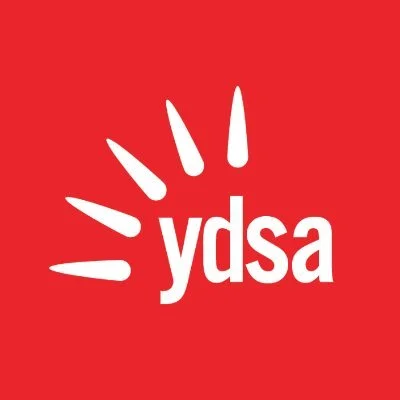
For R10: Building an International Student Movement
James Hernández argues for R10: “Building an International Student Movement” and building connections with student organizers fighting imperialism and capitalism around the globe. Around the world, billions of people are exploited under the boot of capitalism and imperialism. Despite this, U.S. internationalist socialist movements remain nascent and plagued by factional debate. U.S. foreign policy has…
The post For R10: Building an International Student Movement appeared first on YDSA.

For R7: A Program for YDSA
Addison G. and Steven R. make the case for R7 to approve a new program and set a clear political vision for YDSA. Why a Program? Over the past two years, YDSA conventions have voted to move towards adopting a program to unify our organizing work. In 2023, delegates passed A5: “Programmatic Unity for YDSA,”…
The post For R7: A Program for YDSA appeared first on YDSA.

For R13, Against R23: We Must Stay Committed to Labor
Entering YDSA Convention 2025, the authors make the case for YDSA's continued commitment to the student labor movement and against the expansions of broader student union organizing on campus.
The post For R13, Against R23: We Must Stay Committed to Labor appeared first on YDSA.


Bring the Zohmentum home to Vermont
Note: posts by individual GMDSA members do not necessarily reflect the views of the broader membership or of its leadership and should not be regarded as official statements by the chapter.
GMDSA Electoral Committee Chair Adam Franz delivered the following speech at our chapter’s summer barbecue on July 22.
It’s great to see so many people here today, and I thank you all for coming to support our chapter’s delegation to Chicago for the national convention.
I am going into my fifth year as a member of the Democratic Socialists of America, and many of the people here have been in the organization longer than I have. In my time in this org, and in all of our lifetimes, “socialism” and the left have been mostly an experience of defeat. The rollback of the New Deal in favor of neoliberalism, the defeat of the labor movement, the rise of the new right, Bernie’s two defeats, and a second Trump administration. Often, socialists have looked to small wins, like mutual aid, or the lack of a defeat, as a victory.
Zohran’s win changes all of that. Since 2020, socialists have been told, and in many cases accepted, a narrative that our beliefs are unpopular, that a majority of the American people are not with us. When the New York assemblymember, a cadre DSA member, announced his campaign last fall, he was a joke. Polling at just 1%, his platform read to the mainstream media like an ultra-left Twitter bio. Free buses? Rent freeze? Publicly owned grocery stores? No, these were not the talking points they had decided the election would be about. A moral panic about crime, a debate between different forms of centrism—that was what the mayoral election would be about. Zohran’s message would not breach the borders of the already existing base of democratic socialism in New York.
New York City DSA did not, however, just play to its base. After Trump’s victory, Zohran took to the street, talking to voters in neighborhoods that swung hard against Harris in November. He found that voters were motivated by a sense that the country was not working for ordinary people, and that even the lives they had been living four years before were no longer affordable to them. Now, price caps on rent and free, universal public services don’t sound so radical. They sound like the kind of materialist demands that the socialist left has that connect with working class voters.
Zohran’s message took off, propelling him into second place against disgraced former governor Andrew Cuomo. And the more voters saw of Zohran, the more they liked him. The socialist assemblymember seemed like the first politician in a long time that genuinely cared about the struggles of the working class, and had solutions for them. Zohran did not just win the primary by 12 percent; he won neighborhoods nobody expected, and even in the neighborhoods where he lost, he far exceeded expectations, like in the more conservative Staten Island, where he landed only 9% below Cuomo.
If Zohran wins in November, DSA will be in a position to be governing America’s biggest city. Like Bernie 40 years ago in Burlington, we have the opportunity to demonstrate that socialist government is good government. That public ownership is more efficient than private dictatorship. We can realize the slogan that Lenin beautifully gifted us a century ago: “Bolshevism equals soviet power plus electrification.” Socialists recognize that we must radically transform the state to empower ordinary people and deliver a better form of administration of government services that puts to bed the notion that socialism means ineffective government.
The easy thing to do, and you already see this in Democrats’ chosen media outlets like CNN and the New York Crimes, is to say, “This is a New York phenomenon, it can’t be repeated in cities and towns across America. Small-town America doesn’t have the media presence, the right demographics, whatever, to allow such a victory in Anywhere, USA.”
The truth is, New York is not an easy place to win elections for the left. It’s a city with a media ecosystem run by billionaires like Rupert Murdoch, where politics is driven by machines hostile to the left, and where the ultra-wealthy have seemingly unlimited resources to defeat insurgents like us. NYC-DSA won not because of these conditions, but in spite of them. It totally transformed the terrain on which the election was fought, because it had built up its own working-class institutions that could compete with the capitalist class on its terms, not those set by the 1%. The chapter has methodically built up its presence around the city. Zohran could capitalize on 50 thousand volunteers, knocking on doors in every borough and neighborhood to spread the message, leading to record-breaking turnout.
The task for us is to bring the momentum to Vermont. Our chapter clearly is not as big as NYC-DSA, which has over 10,000 members. Yet we have the potential to be just as organized and mobilized.
Working Vermonters are sick of the Democratic Party. Democrats have no answers for working people to address their concerns of an unaffordable state and out-of-control housing crisis. We do. The question is, will Vermont continue to slide back into the Republican camp, or will Vermont follow the “Zohmentum” and elect socialists in 2026?
Clearly, we have our work cut out for us. The Electoral Committee has set a goal to run four candidates for the legislature next year, in winnable seats where we can build a strong presence under the golden dome, and in hopes of building our presence statewide for future campaigns. We do this because we believe that our politics are popular and we can win. It is also because we believe that running for office is not an opportunity to rabble-rouse and talk down to the masses, but to govern as socialists.
To do this, we need candidates. If you have ever thought to yourself, “I wish someone would do something about these problems,” that person is you! If you are interested in running for office, for the state house or selectboard or city council, come find me or another organizer today. There is a place for everybody to play.
If we are going to win, we need a chapter with a fighting capacity. We need to rely on an army of volunteers, like Zohran did. If you haven’t yet, join DSA today! While the capitalist class relies on their money, there are more of us than there are of them. Build the movement, build a fighting DSA, because I believe that we will win in 2026.
And if you want to build on this major win, sign up to get involved with the Electoral Committee. The next meeting is July 20 at 6.

The Case for Student Unionism: Theory and the Virginia Tech Experience
Facing austerity and repression, Virginia Tech YDSA built a student union and brought over a thousand students out to march against the university board.
The post The Case for Student Unionism: Theory and the Virginia Tech Experience appeared first on YDSA.


The Vermont Socialist - GMDSA newsletter (7/31/25): A vast miasmatic swamp

Next week, five members of the Green Mountain Democratic Socialists of America will set out for Chicago, where they'll represent our chapter at the DSA National Convention, the biennial event that determines our organization's nationwide priorities and leadership.
We elected them as our delegates, and now we need to make sure that they can get there and back and still be able to pay rent next month. Here's one last call for our fundraiser – if you're a member of our chapter and haven't already contributed, please consider it. If you're not a member, we recommend joining DSA.
Here at home, we've started planning for Labor Day, joining a coalition that has begun organizing a rally and march for workers in Burlington. You may want to mark your calendar now for 1 p.m. on Monday, Sept. 1 – we'll follow up before then to confirm the details.
Lastly, before we get to our usual list of meetings – have you heard that the nation's most successful third party needs a new executive director? You can learn more about the position on the Vermont Progressive Party's website. To apply, "send a cover letter, resume and 3 references to: Anthony Pollina, Chair, Vermont Progressive Party at apollinavt@gmail.com."
We hope you've enjoyed the summer so far. See you out there!
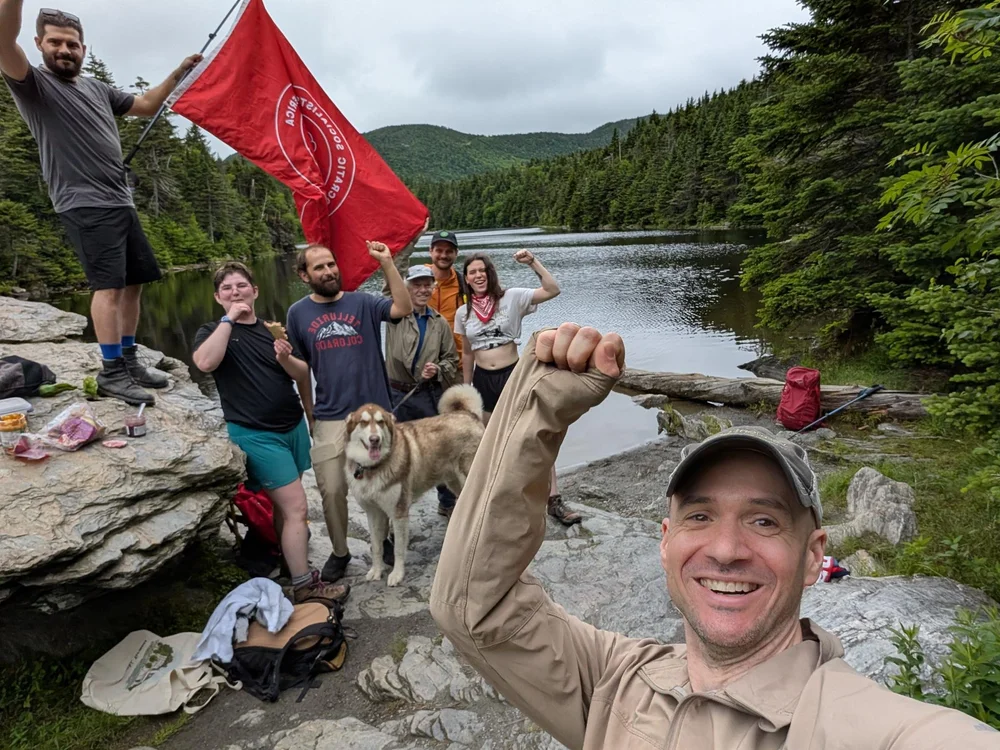
Make it stand out
Whatever it is, the way you tell your story online can make all the difference.
GMDSA MEETINGS AND EVENTS
🚲 GMDSA's Urbanism Committee will meet on Monday, August 4, at 6 p.m. on Zoom.
🔨 Our Labor Committee will hold its next meeting on Monday, August 11, at 6 p.m. on Zoom.
🧑🏭 Talk about your job and learn about shop-floor organizing from peers at Workers' Circle (co-hosted by the Green Mountain IWW) on the second and fourth Wednesdays of each month, including August 13, at 6 p.m. at Migrant Justice (179 S. Winooski Ave., Burlington).
⬅️ GMDSA's West Branch will meet on Saturday, August 16, at 11 a.m. at Burlington's Fletcher Free Library (235 College St.), with an optional orientation for newcomers at 10 a.m.
➡️ GMDSA's East Branch will meet on Saturday, August 16, at 11 a.m. at Montpelier's Christ Episcopal Church (64 State St.), with an optional orientation for newcomers at 10 a.m.
🗳️ The next meeting of our Electoral Committee will take place on Wednesday, August 20, at 6 p.m. on Zoom.
🎥 Socialist Film Club will organize a screening in Burlington on Friday, August 22. Keep an eye on our calendar for a time and location.
👋 Find out how you can help our Membership Committee improve recruitment and involvement in our chapter on Tuesday, August 26, at 6 p.m. on Zoom.
🤝 GMDSA's East Branch and West Branch will come together for a general meeting on Saturday, Sept. 20, at 11 a.m. at Montpelier's Christ Episcopal Church (64 State St.), with an optional orientation for newcomers at 10 a.m.
STATE AND LOCAL NEWS
📰 Unsheltered homelessness is on the rise in Vermont.
📰 Vermont's largest community mental health center announced that it would eliminate 57 jobs and cut services.
COMMUNITY FLYERS
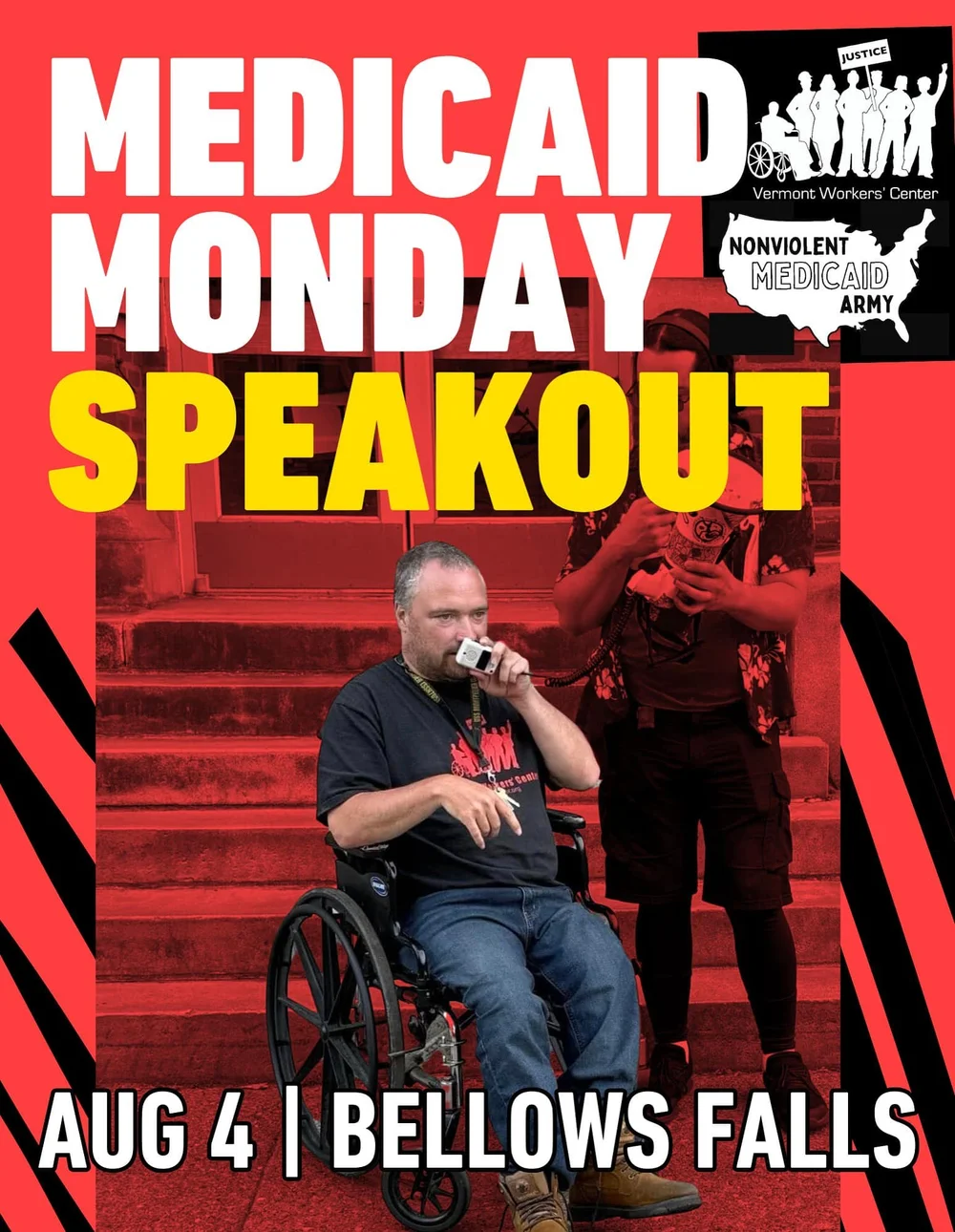

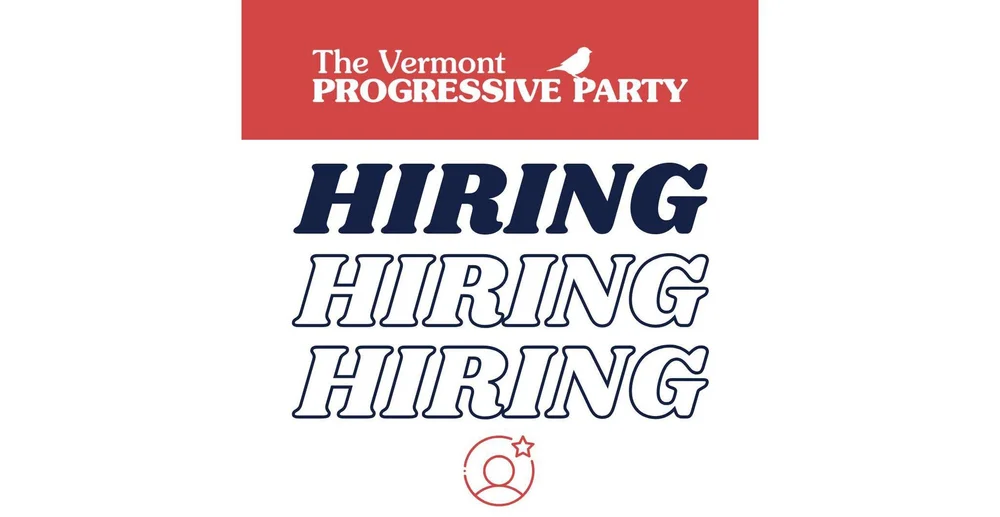



Report to the 2025 National Convention
This Report is submitted to the National Political Committee (NPC) of the Democratic Socialists of America (DSA) by the Green New Deal Campaign Commission (GNDCC) for consideration at the 2025 National Convention. The purpose of this report is: (1) to provide DSA members an overview of Green New Deal campaign objectives, strategy, and organizing activities; (2) to provide the Convention with a report of how the campaign carried out tasks outlined in the 2023 Resolution; and (3) to inform the convention of the successes and challenges of the campaign to assist in more effective future planning.
Overview
GNDCC’s Building for Power Campaign (B4P) organizes chapters to win local demands for green projects and expansion of public services that directly benefit the working class and empower the labor movement. GNDCC trains and mentors chapters to build their base and form winning coalitions with public sector unions, building trades, DSA electeds, environmental justice groups, and public service users like riders’ unions and tenant unions. GNDCC unifies and coordinates local campaigns by training organizers to:
- Research local issues that chapters can strategically intervene in
- Develop strategic campaigns based on objective metrics and criteria for winning and for building a stronger base and chapter
- Mobilize membership to turn out and continually assess campaign strengths and weaknesses
- Build coalitions with labor, elected officials, and other politically-aligned groups
This year, GNDCC’s 2025 Consensus Resolution proposes to continue B4P work because it has been successful in agitating for green policy and in strengthening chapter organizing and structure. The underlying strategy remains viable for the current political moment and is critical to building Left power against authoritarian threats. Due to the quickly changing political landscape, GNDCC plans to democratically develop GND strategy in this term by holding one or more strategy summits for DSA members, potentially in multiple regional meetings. The GND Summit we held in 2020 will serve as a model for future work of this sort.
A Brief History of GNDCC
GNDCC is the culmination of the original Ecosocialist Working Group (EWG), the first-ever climate action by DSA, launched by the National Convention in 2017. At that time, the growing severity of the climate crisis – and the emerging awareness of it – made climate action central to US politics by showing the inadequacies of liberal governance and environmental policy. From the start, DSA climate organizers have earned democratic legitimacy from membership by bringing proposals to our highest decision-making bodies, the Convention and the NPC.
Out of members’ growing conviction that direct campaigning at the national scale is essential to progress on climate, 2019 National Convention adopted, as a national priority, the Green New Deal Campaign, as defined in the Ecosocialist GND Principles. The Principles, endorsed by the NPC and over 60 DSA chapters in 2019, formally positioned the GND as a terrain of class-struggle.
From 2020 to 2021, GNDCC coordinated a DSA-wide organizing Summit which led to the national PRO Act campaign, then GND for Public Schools. The PRO Act campaign, adopted by the NPC and coordinated in chapters across the country, was DSA’s biggest campaign since Bernie 2020 and helped reinvigorate the national organization at a key moment. Based on this experience, DSA’s 2021 National Convention adopted the Ecosocialist Green New Deal priority which made the campaign “one of its highest national priorities.”
However, it became clear that the window for federal action was closing after the Inflation Reduction Act was passed midway through the Biden administration. But the 2023 passage of the ground-breaking New York Build Public Renewables Act, spearheaded by DSA organizers, signaled openings at the local scale. Referred to as the most significant piece of Green New Deal legislation to date, BPRA showed how public sector-oriented coalitions can win publicly-owned green infrastructure investment coupled with union jobs and strong labor provisions.
Building off this win, 2023 National Convention delegates adopted the Building for Power campaign. Under our Theory of Power and analysis of pathways for GND organizing, the campaign proposed to coordinate and help chapters win, at the city and state level, GND legislative/policy demands for public goods built with union labor and designed to further strengthen working class organization around climate. If passed, GNDCC’s 2025 Consensus Resolution will continue that work.
B4P Chapter Campaigns
Resolved that the GNDCC will continue to train and organize DSA chapters to run and win legislative campaigns for reforms that shift structural power to the working class by synergistically building public sector capacity and the labor movement—like expanded mass transit, democratized and decarbonized public energy, green social housing, and green public spaces and facilities.
As a body, we both reach out to chapter campaign leadership and take in chapter inquiries to evaluate for “B4P” status based on our criteria. The volume of inquiries and interest from across the country shows the drive to take climate action and get guidance on how to do so. In the last year alone, GNDCC Steering members have logged over 300 one-on-one and small group touches with chapter members to evaluate and workshop campaigns. In total, we have evaluated almost 100 campaigns and inquiries over the course of this campaign phase.
A plurality of campaign ideas do not make it far. Many chapters suffer from a lack of internal organization, capacity, or buy-in for campaign-type work. When we were debating in 2023 doing another national/federal level campaign like PRO Act versus letting chapters evaluate their own local conditions as under B4P, we recognized that these constraints would mean forgoing working with these chapters. That said, nearly all chapters who are pursuing a B4P campaign have reported that their chapters are stronger because of it.
As of July 2025, we have 11 active Building for Power campaigns across public transit, public power, social housing, and public spaces/schools:
 Louisville – Get on the Bus Louisville – Get on the Bus Chicago – Fix the CTA Chicago – Fix the CTA Los Angeles – Power Mass Transit Los Angeles – Power Mass Transit Houston – Our Vote, Our METRO Houston – Our Vote, Our METRO Detroit – Bring Back the Tracks Detroit – Bring Back the Tracks St. Louis – GND for Public Schools St. Louis – GND for Public Schools |
 NYC – Green New York (BPRA) NYC – Green New York (BPRA) Milwaukee – Power to the People Milwaukee – Power to the People Metro DC – We Power DC Metro DC – We Power DC Metro DC – GND for Housing Metro DC – GND for Housing NYC – House the Future NYC – House the Future |
Below are a few examples of DSA chapter work on B4P campaigns and recent wins.
Detroit Brings Back the Tracks
2025 began with strong momentum from Detroit DSA, where GNDCC member Mel H led a successful power-mapping training that launched the “Bring Back the Tracks” transit campaign. About 15 new and experienced members joined the power-mapping and research working groups that led to the launch of the campaign. The campaign has received positive local press on Detroit Public Radio and Click On Detroit, highlighting the growing influence of our ecosocialist vision in the motor city.
Louisville Gets on the Bus
Louisville DSA’s Get on the Bus campaign, fighting for expanded bus funding alongside the ATU, hit a big milestone, landing on the front page of the Courier Journal in January. In February, the campaign secured key union endorsements: the Jefferson County Teachers Association endorsed, the Louisville Central Labor Council voted unanimously to join the coalition and sign the demand letter, and the Kentucky State AFL-CIO also signed on, with its director publicly recognizing DSA as “the real deal” in building working-class power.
Milwaukee Brings Power to the People
Milwaukee’s Power to the People campaign scored a major win this year by helping to elect Alex Brower to Milwaukee’s Common Council. Alex was a core organizer who helped launch the public power campaign, and as a cadre candidate he ran on a platform that included replacing We Energies with a public utility. Milwaukee now has a socialist in office to help make this campaign a reality! Joining electoral work with legislative demands is a key feature of Building for Power campaigns.
NYC Builds Social Housing
House the Future in NYC began canvassing in March of this year, to advance social housing as a key site of climate resilience. They collected nearly 1000 signatures over a few weekends in support of a statewide social housing developer via a bill authored by socialist in office Emily Gallagher. Ithaca DSA, Long Island DSA, and Mid-Hudson Valley DSA have formally endorsed the campaign and joined NYC in organizing statewide.
NY DSA Chapters Build Public Renewables
BPRA provides a model for a successful chapter campaign within the B4P framework. It was the work of NYC DSA and other NY DSA chapters, including Mid-Hudson Valley DSA, which elected Sarahana Shrestha, a former steering member of the Ecosocialist Working Group, as a key moment in the campaign. It is currently in the implementation phase and GNDCC’s Matt H. recently interviewed Micheal P., one of the strategy chairs, about where the campaign stands now. Michael’s comments are brimming with insights relevant to many chapters and members so please give the interview a read.
In short, New York State has relatively aggressive climate laws — mandating rapid transition to renewables, with benefits of the transition to disadvantaged communities — but DSA organizers understood the State “was not going to take the aggressive action that was needed to meet those goals.” To build a “mechanism to force the State to deliver on this promise,” they used a sort of secret weapon for the energy transition, the New York Power Authority (NYPA), the largest state-level public utility in the country. Seeing it as an opportunity to get the State — not private developers – to build renewables, NYC DSA and a coalition it led pressured the State itself to step up and build the renewable energy.
The strategy included plans to create a huge amount of green jobs, shut down fossil fuel plants, especially in lower-income places with mostly Black and Brown residents, and lowering utility bills. Through internal pressure in Albany in coordination with DSA electeds like Zohran Mamdani and Sarahana Shrestha, external pressure to force a response from target legislators, running insurgent candidates against target legislators, and relentless organizing, the coalition won a law that basically gives NYPA both the power and the mandate to build a ton of publicly owned renewable energy and create all these benefits in the process. The fight to see it fully implemented continues.
Metro DC fights rate hikes
When DC’s electric utility proposed raising rates over 12%, We Power DC fought back by organizing residents to send almost 2,000 letters to the DC Council in the fall of 2024 urging them to stand up to rate hikes. Now, as bills (and summer temperatures) rise, DC’s public power organizers are hitting the streets to canvass for public power and wheatpaste around the District. Meanwhile, the campaign has developed a technical whitepaper to make the case for legislation to build a public alternative to Pepco.
Building for Power 2023-2025
Coaching & training
Resolved that the GNDCC will continue to support the development of chapter capacity by providing campaign-oriented training, coaching, resources, and educational materials and facilitating cross-chapter coordination as part of a larger unified strategy.
Campaign Huddles
Since the GND for Public Schools campaign, GNDCC has understood that regular campaign meetings for chapter leads can be the heart of the campaign and provide the most enjoyable and fruitful organizing meetings many members have been involved in. To this end, we host cross-chapter meetings (once monthly, now quarterly) called “Campaign Huddles.” Typically, 5-10 chapters, often with multiple members from those chapters, participate for the hour-long call and we do outreach to widen and grow interest. In the last two years, we have held about 15 hour-long chapter huddles, with more than 200 unique participants across 70 chapters.
Huddles provide members with opportunities to learn from each other and they give GNDCC ways to collect information from chapter campaigns that can help us understand gaps in knowledge and needs of chapters. Presentations by chapters about their campaigns, skills sharing with experienced members, and open discussion can address very uneven levels of campaign experience and skills among chapters. We talk about tactics and strategic challenges, about comms and organizing tools, about the political moment and preparing for future fights.
Members who attend report loving them, especially for the chance they give members to share experiences, commiserate with each other, and celebrate together. Huddles and similar meetups can also help cohere DSA as a national organization of closely coordinated locals and in building solidarity and a shared sense of direction among members.
Trainings
Training chapter leaders to create and execute strategy, organize internally, use organizing tools, and plan and conduct field work is the core of the B4P campaign. In the last two years, GNDCC has held 5 major trainings lasting over 9 hours, in addition to mini-trainings tailored for specific chapters.
Strategic Campaign Trainings with GDC
In February 2024 we hosted a 3-part training series on strategic campaigns along with the Growth & Development committee. Just over 150 comrades attended live or accessed the recordings, representing over 60 chapters from across the country. One of those participants from Houston DSA went on to revitalize the chapter’s dormant ecosocialist working group and launched a Building for Power campaign on transit, “Our Vote Our METRO”.
Regional Organizing Retreats
Since 2023, GNDCC also participated in 4 DSA regional organizing retreats when these were still taking place to promote Building for Power and the value of running strategic campaigns.
Mini-Trainings
GNDCC also hosted on-demand trainings for specific chapters based on their needs. In 2024 we hosted sessions for Twin Cities, Grand Rapids, and LA to help them think through their local conditions and craft strategic demands.
Coaching
Each actively campaigning B4P chapter has a GNDCC contact who meets with them regularly, advises campaign leads and provides them with resources, reporting back to GNDCC on developments and needs. In 2022-23, GNDCC put together a coaching team of experienced DSA organizers from chapters around the country to help mentor B4P chapter campaigns. Finding members experienced enough, good at communicating, and with capacity to spare (2 to 4 hours a month), is challenging in the best of times and even more difficult when DSA chapters are at low capacity ebbs as they have been during this time. In the past 2 years, this work has been shouldered more and more by GNDCC steering members, and we have essentially stopped expanding the program.
A coaching success story comes out of Los Angeles, where NYC-DSA member Joe S has stepped to work with Los Angeles’ Power Mass Transit campaign when it ran into challenges pushing for a quick-build network of dedicated bus/bike lanes and for free fares on LA transit. Joe continuously challenged chapter leads to take on new strategies/tactics to get what they want without dropping core demands for better transit, get aligned with SIOs, keep attacking the Metro Board, and track chapter/campaign growth outside of direct “wins.” The campaign has since pivoted to targeting the LA Metro Board along with the local janitors union to create a permanent system of free public bathrooms at major transit stations.
Mass Calls and conference panels
Resolved that the GNDCC will continue to collaborate with other DSA national bodies on overlapping campaign and policy areas.
Since 2023, we have hosted 7 mass calls with DSA’s National Labor Commission, International Committee, and Housing Justice Committee, as well as with union organizers, DSA organizers, and socialists in office from around the country. We also helped coordinate panels at the yearly Socialism Conference in 2023 and 2024.
The Fight for a Socialist Green New Deal (June 2025). Union leaders, socialists in office, and DSA campaign organizers explained why they’re continuing to fight for a socialist Green New Deal in the current terrain through Building for Power Campaigns.
Socialism Conference Panel: An Ecosocialism that Builds: What’s Next for the Green New Deal? (Aug. 2024). DSA GND organizers, researchers from Climate + Community Institute, and UAW Region 9A leader Brandon Mancilla formed a panel on rebuilding the labor movement via Green New Deal unionism.
Building for Power in Mass Transit (June 2024). In this webinar, we heard from Building for Power campaigns around the country that are organizing for mass public transit with organized labor and socialists in office.
Workers and the World Unite: Labor in a Green New Deal (January 2024). Hosted by GNDCC and the DSA National Labor Commission, organizers from across the country spoke about their work and how it fits into the theory and practice of a just transition and a socialist horizon.
Ceasefire Now For People and Planet (Dec. 2023). Panelists from DSA, Al-Shabaka: The Palestinian Policy Network, and Dissenters discussed the resurgence of a Left anti-war movement and organizing for Palestinian liberation in the context of the climate crisis, and explored how ecosocialist organizers can deepen internationalism and anti-militarism within domestic climate organizing.
Socialism Conference Panel: The Longer Road to a Green New Deal (Aug. 2023). DSA climate organizers, including GNDCC members, participated in a Green New Deal panel at the conference focusing on B4P strategies and the BPRA.
The Path to Green Social Housing (July 2023). Panelists from GNDCC and the Housing Justice Commission discussed different contemporary and historical approaches to the development of class- and eco-conscious social housing and how we can win it today.
BPRA: A Win in the Fight for a Green New Deal (April 2023). In this webinar, we heard from DSA climate organizers who made Build Public Renewables happen, and about how we can grow the movement for public power to win a Green New Deal from coast to coast!
Building for Power: Launch Call (March 2023). In the launch for the then new B4P Campaign, we heard from DSA member-organizers in Detroit, Philly, and Maine chapters, plus DSA electeds Hugo Soto-Martinez (LA) and Sarahana Shrestha (MHV).
GNDCC Chapter Grants and Fundraising
GNDCC has also distributed almost $7,000 in grants to campaigning chapters For example, Philly DSA was able to build 100 Corsi-Rosenthal Boxes (DIY air filters) for classrooms across 12 schools with their grant funds, aiding the community and building strong relationships as part of their Green New Deal for Public Schools campaign. Louisville’s Get on the Bus campaign printed 100 stickers for bus stops and 1,000 push cards for canvassing/tabling, which kicked off their ongoing work. In the same time, our committee has raised $4,500 in donations to DSA.
Campaign Challenges and Opportunities
US Politics
When we drafted our theory of power in 2022, we were organizing in the context of a neoliberal Democratic administration over which the Left had limited power. Now we find ourselves at the start of Trump’s second – worse – term. ICE is raiding communities and chapters are organizing to defend immigrants and trans people from the Right’s assaults. Trump has launched a trade war, frozen research grants, threatened universities, and purged federal workers. Basic environmental protections like the Clean Air Act are under threat, and some funding under the Inflation Reduction Act (IRA) has been rescinded. Meanwhile, Democrats play dead, post weak clap backs, and try to flank Trump to the right.
In this setting, it is true that chapters may become stretched responding to immediate demands more pressing than new bus lanes. But our view is that, through B4P campaigns undertaken now, chapters can build the leadership and organizing skills and expand the outreach and recruitment that will be essential to responding to whatever Trump dishes out.
The crises we face are urgent, yet the public goods we are working to expand take years to build out; there is no time to waste. An organized Left must keep pushing on the local level, where there are still opportunities to build working-class power and green public sector capacity.
The recent victory of Zohran Mamdani in the Democratic primary for Mayor of New York points the way forward. While Zohran’s campaign was laser-focused on making an affordable NYC for all, the demands were crafted in a way that proposed Green Abundance for the Many through policies that “embed climate action in real improvements for working peoples’ everyday lives.” This approach, merging electoral organizing with climate action through broad coalitions oriented to labor, is deeply connected with the Building for Power framework that is popular among so many DSA chapters. GNDCC believes this model, adapted to various conditions across the country, can post major wins on climate and forms a core strategy for fighting right-wing austerity and authoritarianism. Notably Zohran was a core climate organizer in NYC during his tenure as Assemblyman and is credited with stopping a new gas plant in Astoria, securing more funding for public transportation, and helping to push BPRA over the finish line.
Chapter Conditions and Internal Organizing
The last 2 years of Biden’s term, marked by the Gaza invasion and genocide, were demoralizing for DSA members. Chapters did broadly experience demobilization and fought to build in a landscape with little federal political possibility open to the Left.
While the Build Public Renewables Act as well as the Zohran campaign provide models for successful chapter campaigning in the B4P framework, it’s also clear that most chapters are not in a position to win demands of that size or scope. In addition to external political barriers, DSA chapters have uneven capacity and skill levels, uneven organizing cultures and uneven mobilization. But chapters can win B4P campaigns on the scale of their local conditions! B4P’s strategy is designed to develop chapters in all those areas, particularly intensive organizing capacity to win power and transformative demands.
While some chapters are struggling to get going, other chapters are reporting: wins in electoral campaigns that include GND demands, like those of Zohran and Alex Brower; new B4P campaigns with chapter buy-in; formation of chapter power-mapping groups; recent social events to build engagement; good canvassing numbers – especially in electoral campaigns pushing GND demands; and growing engagement with labor union locals. The GNDCC’s goal is to help chapters build, sustain, and spread organizing momentum in the next two years.
Long Timelines and Developing Crises
Because this campaign is an ambitious effort to coordinate many local campaigns by chapters under varying conditions, we recognize that developing winnable demands while building working class power will take time. Chapters need time to do strategic groundwork or build capacity. Like a massive locomotive leaving the station, it will take time to gain traction and speed, but once started, it is difficult to stop.
We are proposing to continue this campaign and the great work it’s started. The instability and incoherence of the Trump Administration and the Democratic response mean that the political landscape is in great flux and predictability is limited. GNDCC therefore plans to democratically develop Green New Deal strategy in this term by holding one or more strategy summits for DSA members, potentially in multiple regional meetings. The GND Summit we held in 2020 will serve as a model for future work of this sort. We intend to continue mapping this terrain with a broad range of DSA members and providing them with training, coaching, resources, and organized labor power, to achieve progress in the next two years.
Last Word
Men make their own history, but they do not make it as they please; they do not make it under self-selected circumstances, but under circumstances existing already, given and transmitted from the past. — Karl Marx
The post Report to the 2025 National Convention appeared first on Building for Power.
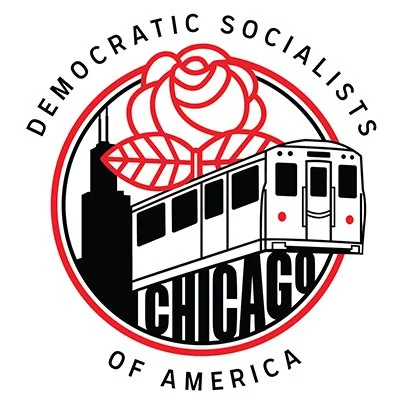

There Are More Important Things Than Getting Elected
As the current socialist movement, we need to ask questions about what our goals for electoralism should be. The “default” goal, putting one person in office, is not as important as being shamelessly socialist. The power the electoral system has is extremely limited. It’s time for us to stop compromising our messaging in order to put people in office.
In 2016, Bernie Sanders ran for president as a Democrat. Almost every candidate for at large DSA members running for this year’s slate listed more electoral involvement, either on the local or national level, as a goal the DSA should strive for in the future. The potential for socialists in government is real as the rotting Democratic party finally begins its decomposition. Take Bernie Sanders. He didn’t even win the primaries. But there are people reading this article right now who owe their interest in socialism to Bernie Sanders’s run.
Many in the Democratic Party insisted that Sanders was “too extreme” to run for president, and they used numerous dirty tricks to derail his movement. Those efforts to smear him have largely failed.Sanders was not elected president, but electoral success is not the only important consideration. Sanders’s run pushed the issues that voters cared about leftwards and even forced the Democratic Party itself in a more socialist direction. If he had chosen a more moderate line, the Democratic establishment would have been friendlier, but he would not have the ideological effect that he did. Ever since 2016, we have seen how one person can move the Overton Window of acceptable discourse. As Donald Trump’s rise shows, people are attracted to ideas that don’t fit into the mainstream. We at the DSA have an ability to offer people what other parties and candidates are simply not able to.
Like Trump and Sanders, Zohran Mamdani—the candidate who recently won the Democratic primary in New York as a self-proclaimed democratic socialist—is unignorable in current discourse. Candidates for state and federal office have a unique chance to spread their message and advance anti-capitalist ideas seen as dangerous.American democracy is in critical danger, but independent, left-wing candidates are still able to run and win despite the numerous impediments placed in their way. Electoral campaigns, with all their associated canvassing, publicity, and news coverage, must be acknowledged as perhaps our most effective mass media method of spreading ideology.
This also means that any electoral campaign isn’t just a local campaign. Once it gains enough publicity, it is national. Not everyone who engages with the candidate or the campaign can vote in the election, but they are certainly hearing and forming their own opinion on anyone who calls themselves a socialist candidate—and by extension opinions on the DSA, socialists, and socialism.
The mayor of New York City is a powerful office, but its power is not unlimited. As socialists, we know that we cannot rely on establishment Democratic candidates to back socialist reforms, and Mamdani is likely to be hemmed in by hostile Democratic forces all around. The New York City Council, which has ultimate authority on budgetary concerns and land use permissions, could seriously cut back on his power. How much he is able to accomplish depends on who wins the New York State Governor race, which could be won by Cuomo’s former running mate, Kathy Hochul. The New York State Legislature has a large Democratic majority, but there are no guarantees that Cuomo’s remaining supporters and the mainstream Democratic Party will work with him on any significant reforms.
Socialists will by default be the minority in any government in the U.S. This means that any meaningful reforms will have to be enacted in cooperation with capitalist political parties. In this case, Mamdani’s most ambitious policies will depend on a slate of Democrats who may not be willing to back even the most basic of reforms and have huge conflicts of interest across the board.
Mamdani’s campaign also raises the question of how likely his rent freeze plan is to be implemented. The landlord lobby can throw millions at an independent Cuomo run for mayor, and it plans to spend heavily in the New York City council primaries. If disgraced New York City Mayor Eric Adams is smart, he might be able to throw a wrench in Mamdani’s plans by stacking the Rent Guidelines Board with term-length candidates before Mamdani is able to take over. Despite all the choices by Mamdani’s campaign to water down his ideological communication from the beliefs of the wider DSA, his victory or defeat will still end up being most effective as an advertisement for socialist ideology.This is the way the political system right now operates.
IT’S TIME FOR RADICAL MESSAGING
As we contend with the possibility that Mamdani could be the next mayor of New York City, we must ask ourselves a critical question: Is it truly possible, in a system dominated by capital and elite interests, to accomplish socialist goals just by passing bills? No. Capital won’t allow it. The entire system is created and run by capital and those who benefit from it.
The fact that the current administration is tearing down the very rules of our democracy itself proves it. Democracy is less and less able to hold power as the contradictions of capital deepen. These systems of power exist at the will of the ruling class, and they cannot be relied on to carry our cause to victory. In the wake of a new, dangerous Supreme Court ruling sharply limiting the ability of the judiciary to enforce federal laws, can we be sure that the federal government won’t end Mamdani’s candidacy by illegally deporting him?
Socialist parties seeking to abolish capitalism are not the same as other political organizations. Our movement represents the working class, and that means that our power does not come from the act of holding office or exercising executive or legislative authority within a capitalist state. Instead, our power comes from the people themselves, in the sense that socialism must (if it is to succeed) command a power that goes beyond peoples’ willingness to vote for us. Our base does not exist to win elections.Electoralism is only one arm of the socialist movement, which works in social justice, labor movements, and in anti-establishment movements.
Running an election-first campaign might mean watering down the message to make it more mainstream, working to appeal to donors who don’t share our beliefs, or changing the tactics of an entire chapter to appeal to different demographics of people. These might sometimes help win elections, but as a practice hurts the wider DSA. We should not forget where our real power comes from and what our ultimate goals are. In Mamdani’s case, his campaign sacrifices radical socialist rhetoric in order to merely be elected.
Mamdani isn’t officially endorsed by the national DSA, but he’s still the face of socialist politics at the moment. Mamdani enthusiastically chooses to associate himself with the Democratic Party—a party which openly serves the interests of capital above all else and currently supports the genocide in Gaza and control at the border. Practically speaking, the Democratic Party is a hostile force and any wise socialist would treat them as such.
Mamdani was also criticized for not taking a stand against the police. He explicitly assures people he’s not going to defund them in a way that plays to his critics. When asked if he would use the NYPD to clear the streets for ICE, he equivocated about “ensuring we keep order across the city.” To him, the NYPD is no longer an enemy.
Mamdani’s line is a clear concession to the needs of the campaign rather than the message of the movement. Nobody, not even those who defend these statements, disagrees. It’s only a question of strategy. This strategy is harmful. Fighting against the Democrat-backed Gaza genocide and defunding the police are popular keystones of the modern radical movement. Elected candidates should fully represent the DSA. If they don’t, why are we running them in the first place?
Our cause needs propaganda, in the sense of ferociously spreading ideas and beliefs. What we give up rhetorically for one election for fleeting power might lose us more people in the long run.Candidates have great potential if we take the opportunity to use them as members of the DSA socialist project instead of as individual campaigns which exist to serve only their own ends. The DSA runs candidates—candidates shouldn’t run the DSA.
A ‘left-wing Trump’, capable of having a similar meteoric effect on national political discourse, won’t expect to win the presidential election. They won’t shrink from saying things that are wildly unacceptable in the Overton window. In doing so, they will be able to have ten times more of an effect than a candidate hedging their bets and focusing on being elected within the lines that are set out for us by the Democratic establishment.
Getting people elected is just a means to an end, not our ultimate goal. The battle we are fighting on the international stage is, and has been for a long time, one of ideology as much as law.Our goals as socialists cannot be focused on merely the next four years and the legislation in our county. Instead they must be for the century and for the entire working class.
The post There Are More Important Things Than Getting Elected appeared first on Midwest Socialist.


What California Labor History Has to Say About the New York Mayor’s Race
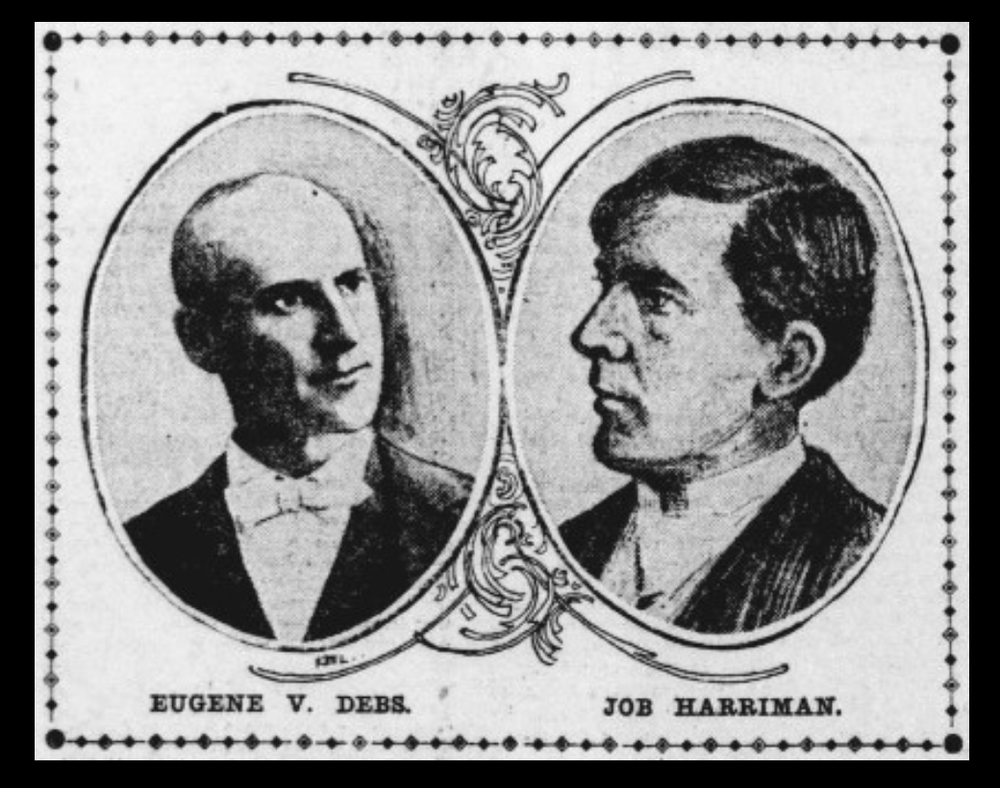
Job Harriman and Eugene Debs were running mates for president in 1900.
One hundred and fourteen years ago a democratic socialist was poised to become Mayor of Los Angeles. Not yet the sprawling megalopolis of today, the city nonetheless ranked second largest in California, and was growing fast. A socialist in the top municipal office? The idea sent the L.A. ruling class into a freakout of redbaiting, lies, half-truths and an occasional accurate depiction of Job Harriman’s progressive positions.
The Socialist Party candidate—a labor attorney, and former vice-presidential running mate of Eugene Debs—had come out on top of an open primary, just short of the majority he needed to win outright. Now he faced off against the incumbent, a champion of the interests that had earned Los Angeles the moniker of “scabbiest town on earth” within the city’s unions. Adding spice to the mix, this would be the first major election in the Golden State in which women could vote, Proposition 4 having just squeaked by in a state referendum the same day Harriman won the mayoral primary.
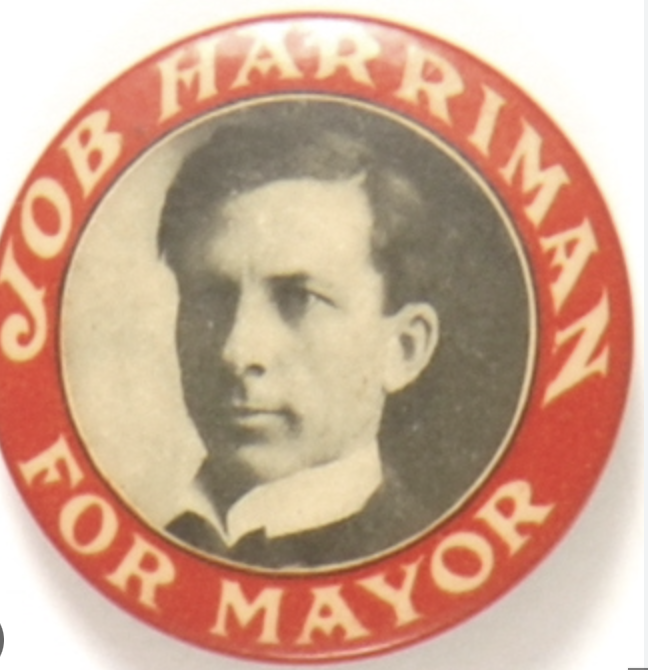
Job Harriman almost became LA Mayor in 1911
The business elites threw everything they could muster into their effort to stave off the Apocalypse. The Los Angeles Times—a virulently anti-union publication owned by Harrison Gray Otis, leader of the Merchants and Manufacturers’ Association, a close friend and business associate of corrupt Mexican dictator Porfirio Diaz—warned every day with a creative variety of arguments that if Harriman were elected, the sky, along with the economy, would crash onto Angelenos’ heads. He editorialized that this election represented “the forces of law and order against Socialism; peace and prosperity against misery and chaos; the Stars and Stripes against the red flag.” What program so enraged and frightened the capitalist class of southern California? Harriman promised to:
Reverse an anti-picketing ordinance that had filled Los Angeles jails with peaceful union members for the crime of walking on sidewalks with signs, singing labor songs, while on strike;
Investigate the real estate deals that had brought giant payoffs to Otis and his friends when the Owens Valley aqueduct terminated on land they had purchased via insider information (the real life backdrop to events depicted in the film Chinatown);
Municipalize city services to save the taxpayers money and improve efficiency;
Invest in building community centers, public pools and baths, and increase support for public schools;
Oh, and modestly raise taxes on the rich and large businesses to pay for these reforms.
Pretty radical stuff.
Ultimately none of these political ideas or the opposition’s counters to them defeated Harriman. What did was an early historical appearance of the “October Surprise”. A year before the election, a bomb ripped through the Los Angeles Times building, killing twenty workers. When brothers James and John McNamara (a national leader of the Ironworkers union) were arrested and put on trial, Harriman, the top labor attorney in southern California, defended them, believing in their innocence. When he decided to run for mayor, he turned the defense over to crusading lawyer for the damned Clarence Darrow. Darrow had previously proven that labor leaders in Colorado accused of a bombing had been framed, and like Harriman, thought the McNamara brothers trial was a rerun.
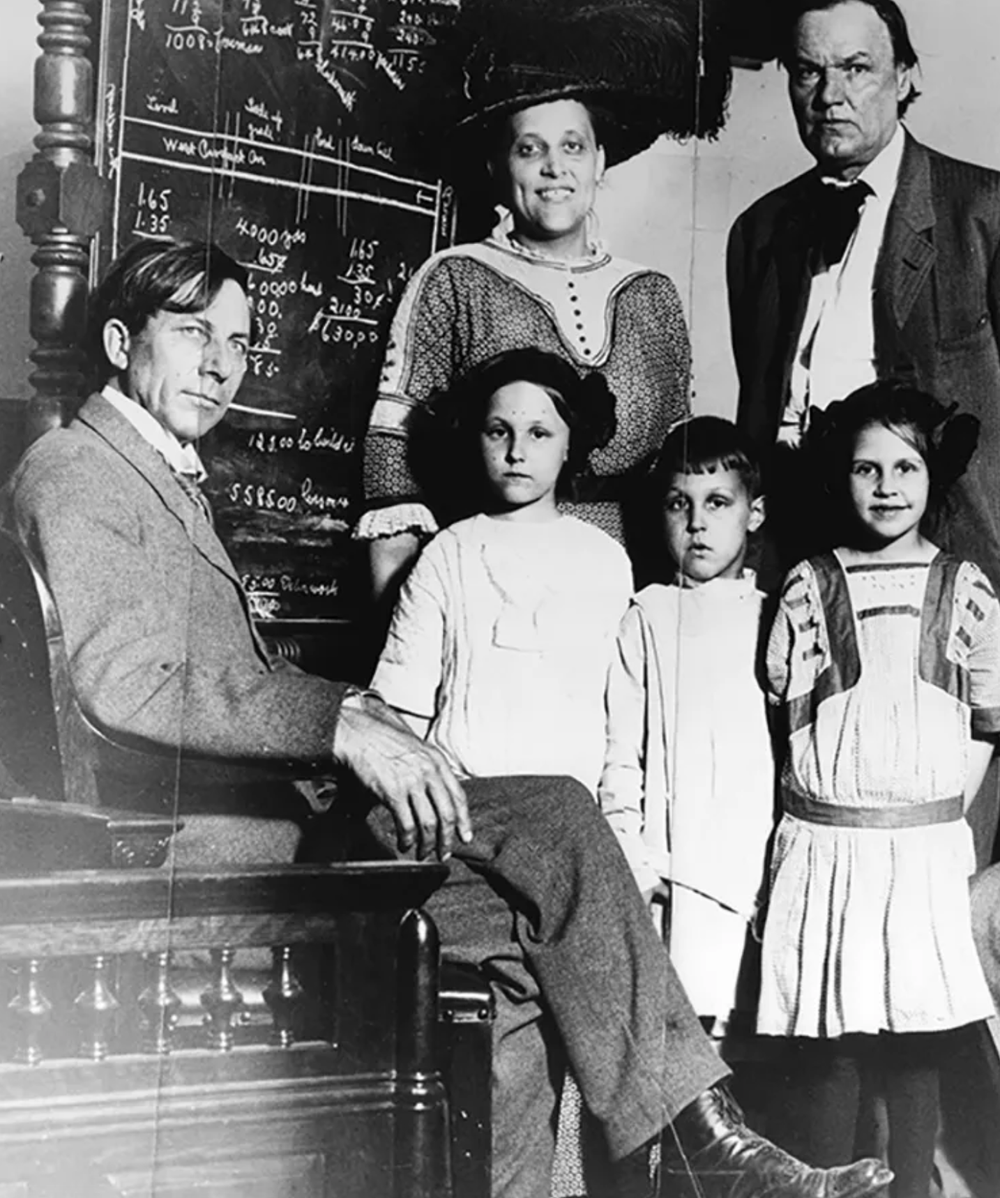
Job Harriman, left, and Clarence Darrow (right) with Mrs. Ortie McManigal and her children. Another bombing conspirator, McManigal confessed before the McNamaras.
But the McNamaras were guilty, as Darrow ultimately found out. After secret negotiations with Otis and other Los Angeles business leaders, Darrow—a fervent opponent of the death penalty— unexpectedly changed his clients’ plea to “guilty” just days before the election. The timing was key to the agreement. In exchange the prosecution agreed to ask for prison instead of death sentences.
Although left out of the loop, Harriman suffered the consequences. Heavily favored to win a week before the election, but firmly tied in the public’s mind to the McNamara’s defense, he and the entire Socialist slate went down to defeat.
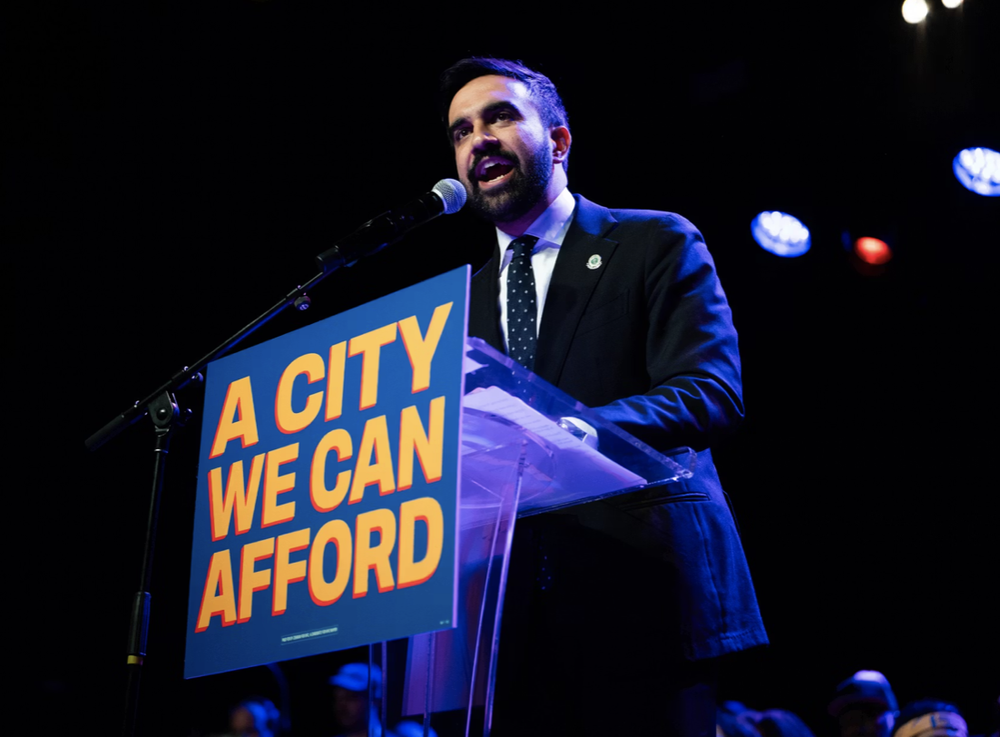
Zohran Mamdani is lined up to become the first democratic socialist mayor of New York—if he can overcome the billionaire-funded smear campaigns against him.
Today democratic socialist Zohran Mamdani is in good position to win the New York City Mayor’s race. With a ferocious ground game, smart media, charisma to spare and a set of goals clustered under the umbrella of “affordability” popular with the working class and youth, his coalition will be a formidable force between now and November. He’ll likely confront a Republican rival, incumbent Mayor Eric Adams and the disgraced former governor Cuomo, whom he just defeated in the Democratic primary. If both run the latter two will split the anti-Mamdani vote sufficiently to get him elected. In the interests of ruling class solidarity, Cuomo has suggested the lesser not-Mamdanis drop out in favor of the one best positioned to beat him by September.
The climb will be slippery. The mud is already being flung by the usual suspects. One shouldn’t be surprised by Trump’s characterization of Mamdani as “a one hundred percent Communist lunatic.” That won’t be the deciding factor, as the unpopular former New Yorker POTUS will probably add more votes to Mamdani’s column than he removes.
The two biggest problems will come from the right wing of the Democratic Party—intransigent Zionists and the city’s Wall Street and real estate sectors. Alongside mountains of cash from billionaire bank accounts, the leading edge of the anti-Mamdani campaigns will comprise redbaiting and spurious charges of antisemitism.
What does card-carrying DSA member Mamdani actually stand for?
A freeze in rents for stabilized apartments
Free city busing
Raising the city’s minimum wage to something close to liveable: $30/hour by 2030
A community safety department separate from police to deal with mental health related issues
City-run grocery stores to bring down food prices
Free childcare for children six weeks to five years old
Oh, and modestly increasing taxes on corporations and the wealthiest New Yorkers to pay for the above.
Like Harriman’s wish list, not exactly the Bolshevik revolution here, but you wouldn’t be able to tell the difference from what the other side is already saying and what they will flood the airwaves with for the next few months. It’s the last item, of course—raising taxes on the rich and corporations—that, as in L.A. in 1911, especially infuriates the city’s plutocrats.
Currently most New York City residents pay around 3% of their income in city taxes. The wealthiest income earners pay closer to 4%, with an absurdly flat cap for people making $500K and above. New York City at last count is home to 350,000 millionaires. The richest 1 percent of New Yorkers tripled its share of the city’s total income from 12 percent in 1980 to 36 percent in 2022.
These statistics represent a flashing red sign about the city’s lack of affordability—along with an “X marks the spot” for the buried treasure that can pay for decent public services for the 95 per cent of the city’s inhabitants who aren’t millionaires. The slight tax increase Mamdani is calling for—2% on individuals making a million dollars a year—will not crimp the lifestyle of the rich in the least.
When socialists run for public office, or when measures to reduce economic inequality are placed before the voters (e.g., taxing the rich, a raise in the minimum wage, help for renters), you can count on the most reactionary sectors of the ruling class to spend freely to convince everyone to see the world through the same warped lens they do. You can also bank on the same tired tropes at the core of their argument. Behold: these tax increases are going to hurt everyone; small business can’t afford it; the wealthiest New Yorkers (mislabeled “job creators”) will flee the city and go to a more welcoming business environment; and all the jobs will leave with them.
In the real world, these things never happen. Take the California example, 101 years after Harriman’s defeat. In 2012, over the dire predictions that the “job creators” and their jobs would flee California, voters passed a progressive tax bumping top income earners up a couple percentage points. The tax, Proposition 30, has brought in seven to nine billion dollars a year, and prevented public services from going over a fiscal cliff in the aftermath of the Great Recession. In the years following its passage, the state minted ten thousand new millionaires, and 1.4 million new jobs.
In New York, where much of the wealth is clustered in finance and real estate, the former creates relatively few working class jobs and the latter can’t move. The lies may be countered with clear messaging explaining the real problems, how to address them, and who should pay to fix them. Which is what Mamdani has been doing.
But there is another weapon in the anti-Mamdani arsenal: the charge of anti-semitism—which for AIPAC and its candidates of course means the duplicitous conflation of ‘anti-Zionist’ with ‘antisemitic’. A deluge of these talking points and ads in support of Cuomo failed to take Mamdani down in the primary, but that doesn’t mean that the stream of invective will stop during the next stage of the campaign. For a recent example we could turn our gaze across the Atlantic to England, where another democratic socialist, Jeremy Corbyn, who achieved a surprise momentary capture of leadership in the Labor Party, was brought low principally by a combination of the highly organized repetition of the lie (mostly by the right wing of his own party) and a fumbled response to it.
Two big things are different in this regard in New York 2025 compared with the England of a few years back: the war in Gaza and its impact on Jewish opinion about Israel, which means the deception in the equation of Jewish and Zionist is much clearer to many more people; and the charismatic Mamdani is not the curt Corbyn, despite similarities in their democratic socialist politics.
What would a Mamdani victory mean at this moment in our history? A democratic socialist mayor in the largest city in the United States would be a tremendous boost to anti-fascist morale as the mass movement to oppose Trump and MAGA is slowly gaining steam. It would arguably provide a programmatic roadmap to victory in the 2026 elections (presuming they are going to be held, and held fairly).
Yes, we are aware that New York City is not the rest of the country. But the largest urban centers are farther to the left than any other stash of votes, and they are where the resistance to Trump and MAGA has been and will likely continue to be strongest—an important indicator of possible electoral victory, if the coalitions emerging from organization of the mass demonstrations are able to develop the necessary synergy between street and ballot box forms of activism. A sclerotic neoliberal politics as usual will not mobilize this base.
Here in California municipal democratic socialist politics have gained ground over the last few election cycles. In all, there are more than three dozen DSA-affiliated officeholders in the state—the most since the heyday of the Socialist Party more than one hundred years ago—including four mayors, fifteen city councilmembers, a state assemblymember, a county supervisor, and occupants of various down ballot offices, all of whom push for progressive policies shunned or feared by most of their fellow officeholders.
If Mamdani loses, the leadership of the Democratic Party will redouble its push to field empty neoliberal suits in 2026. Harriman’s defeat in LA in 1911 set back the cause of working class politics for decades. A high-profile loss like that today would make it that much harder to remold the Democratic Party as a majoritarian progressive force. Alternatively a win will provide wind in the sails to the anti-MAGA movement, on the strength of which Democrats can reclaim power. That’s why it’s necessary to forcefully demonstrate the viability of Mamdani’s politics now.
California DSA members may be three thousand miles away from this historic battle but we can nonetheless help. Mamdani needs every penny he can raise to fight the onslaught of right wing lies propelled by billionaire funding. Send him your hard-earned dollars here.


Devastation for Medicaid, Opportunity for Fightback

The massive cuts to Medicaid in Trump’s budget package promise devastation, not only to the 13 million people who will be stripped of eligibility, but to hospitals and clinics in rural and other underserved communities that rely on Medicaid funds to remain solvent. Many will close or be taken over by private investors who specialize in buying public entities and "downsizing" them, maintaining only those services that turn a profit. Public hospitals everywhere will tighten their belts, laying off workers and stonewalling in contract talks with their unions. People who have been cut off Medicaid will have nowhere else to go for care but already overburdened emergency rooms.
Sooner or later, most seniors and people with disabilities requiring long-term care wind up relying on Medicaid to pay for it, because it can wipe out your savings in a hurry. As of July 2024, Medicaid is the primary payer for 63% of nursing home residents; the cuts will put them in an impossible situation. In the Black community, maternal mortality rates are already shockingly high; the cuts will push them even higher.
Congressional Republicans claim they are saving money by stripping away eligibility from illegal immigrants and the people who don't meet work requirements (what were known in Victorian England as "the undeserving poor"). But nearly two-thirds of those on Medicaid actually do hold jobs, and most of the rest are either ill, disabled, or serving as primary caregivers for someone else. As for the undocumented, federal spending on their health care is already against the law. In states where all residents are eligible, regardless of citizenship or immigration status, the state picks up the tab for their care.
Far more people will be affected by the cuts than the GOP is letting on. Rep. David Valadao represents Bakersfield, California, and the surrounding area. Nearly two-thirds of his constituents are on MediCal, California's version of Medicaid. Valadao promised to oppose any cuts to Medicaid, but when it came time to vote on the House budget bill, he caved and voted yes. There are others in Congress like him. If only one of them had voted no, the bill would not have cleared the House.
But the Republicans are right about one thing: soaring health care costs are making both Medicaid and Medicare unsustainable. There is an enormous amount of waste built into both programs, and continuing down the current path is fiscally irresponsible.
Problems due to subsidies of private capital
This isn't because the wrong people are getting coverage. It's because, over the years, every move by the federal government to extend health care access has been accomplished with massive subsidies of private capital. Many people were helped by the Affordable Care Act, but the private insurance industry benefited from it to the tune of $10 billion of our federal tax dollars. A majority of people on Medicare now get it from private Medicare Advantage plans, paid for out of the Medicare trust fund. These are a gold mine for corporations like United Health, bilking the system even further by claiming patients are sicker than they actually are, while denying costly claims for those who are truly sick.
As for Medicaid, East Bay DSA member Michael Lighty, who chairs the statewide Healthy California Now coalition, points out that “90 to 95 percent of the benefits nationwide through Medicaid are administered by for-profit managed care organizations. That’s where the waste is, that’s where the fraud is.”
In some parts of the country, Republicans counter Democratic charges of throwing the poor under the bus by pointing out the Democratic Party’s ties with corporate hospital chains. And private for-profit hospitals do, in fact, make a killing off federal programs, often at the expense of patient care.
The threatened cuts to federal health care spending are symptoms of a crisis that neither party has shown a willingness to confront, despite efforts by a minority of Congressional Democrats to promote a single payer solution. Each party uses the health care system's failures to attack the other, but only independent political organizing can defend the millions of people whose lives and well-being are at stake.
This applies not only to electoral politics but to unions. Maintaining health benefits in the face of steadily rising costs has long been a millstone around the neck of organized labor. Union negotiators are forced to sacrifice much of their leverage at the bargaining table not to win better coverage, but just to keep what they have. When contract talks break down, health coverage is usually the cause.
Unions need to do more than pass convention resolutions
Organized labor is arguably the only institution with the resources and infrastructure to counter the influence of the health care industry. Union leaders who have had to bargain over health benefits know all too well the stiff price of a system of private, employer-based health coverage. Many will readily acknowledge that a universal, publicly funded health care system would be far better for workers. But union political behavior is notoriously risk-averse, and telling your members that they can no longer count on the union to win decent coverage is an admission of defeat that few union officials are willing to make. For them to do more than simply pass single payer resolutions at conventions, their members will have to demand it.
The appalling cruelty of the Medicaid cuts has emerged, quite properly, as a major talking point for Democratic politicians. But it falls to us to point out that real solutions require a willingness to attack the source of the problem: the looting of public health care dollars by private capital. Until that happens, every effort to extend access to care will be held hostage in the face of exploding costs and the states’ fiscal crisis.
Perhaps necessarily, health care reform has been a lower priority in recent years for many in labor and the left. But the federal budget has pushed it onto the front burner, whether we like it or not. In the wake of the 2016 Bernie Sanders campaign, single payer was at the top of DSA’s agenda. It's time for us to take it up again in earnest.
No shortage of opportunities to engage
The impact of the cuts is so sweeping that there will be no shortage of opportunities to engage. Something like 70 percent of the money spent on health care in California ultimately comes from our tax dollars. Massive cuts at the federal level–which include premium subsidies under the Affordable Care Act as well as Medicare and Medicaid–will be felt across the board:
Insurance companies can be expected to try to make up for lost federal revenue by jacking their premiums, making it that much harder for unions to bargain over health benefits. We need to pay close attention to union contract struggles and not simply lend our support, but be prepared to talk about why it will take more than tough bargaining and militant picket lines to protect those benefits. We need to persuade our unions to not just pass resolutions, but to actually invest resources and political capital in the fight for single payer.
Community hospitals and clinics that serve MediCal patients were already under growing pressure to economize by cutting back on care, struggling just to stay open. The federal cuts will drastically worsen the situation. Community members most directly affected will need organized support, and local officials will need to have their feet held to the flames to make sure everything possible is done to keep those facilities running and adequately funded.
Two years ago, after years of struggle, California became the first state in the country to extend Medicaid eligibility to all qualified residents, regardless of age or immigration status. But even before the federal budget was passed, Gov. Newsom and the state legislature were walking back on the commitment—there will be no new enrollees among the undocumented starting next year, and those already enrolled will be required to pay a $30 monthly premium (thankfully, the legislature scaled back Gov. Newsom’s original proposal of $100). With the state facing a budget deficit, there will be enormous pressure to further undermine a victory that immigrant rights forces fought long and hard to achieve.
When you or a loved one is denied needed care, or can't get it without financial hardship or ruin, it's the most natural response in the world to think, "This is just wrong," and react with anger. It's highly personal, and all too real. But once the conversation turns to economics, how health care is to be financed and what its cost drivers are, you've moving beyond direct experience and into the realm of public policy. All too often, this involves a dive into the weeds that not everyone is prepared to make.
Here is where a socialist perspective becomes indispensable: everything about our health care system that involves the taking of profits drives costs upward, and those costs have soared beyond the point where the system can continue to absorb them. During the debate over the Affordable Care Act, one of Obama’s policy wonks remarked that health care reform was complicated because the system has so many moving parts. But all of the machine’s components have a single power source, and it’s on us to name it. There is a reason why the world’s most market-driven health care system is also far and away the most expensive.
Naming the system is not enough; you need an effective strategy to defeat it. Here again, DSA is equipped to bring something to the table that is badly needed: an analysis of the different forces that can be won over, an understanding of how and when their interests intersect and what it might take to “unite all who can be united” and get them working together. The catastrophic cuts to the federal health care budget are an opportunity as well as a crisis. Let’s not squander it.